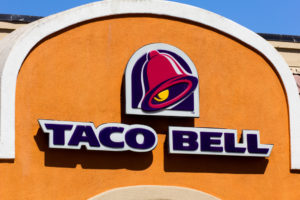French economic journalist and satirist Frédéric Bastiat, widely known for his sarcastic opposition to protectionism, observed in the mid-1840s, “In the economic sphere an act, a habit, an institution, a law produces not only one effect, but a series of effects. Of these effects, the first alone is immediate; it appears simultaneously with its cause; it is seen. The other effects emerge only subsequently; they are not seen; we are fortunate if we foresee them.”

“Bad economists,” Bastiat mused, are those who pay attention only to the “immediate seen effects” and never foresee—because they never look for—the subsequent “not seen” effects. “Good economists” pay attention to both, the seen and the unseen.
California’s state legislators and governor have shown once again how bad they are as economists, using Bastiat’s gold standard. In September, Governor Gavin Newsom signed a new minimum-wage law (on top of the state’s current minimum hourly wage that will rise to $15.50 on January 1), dubbed “Fast Food Accountability and Standards Recovery Act,” or the Fast Act, that will go into effect this January, unless delayed (as likely) by a proposed ballot proposition that will force voter approval.
The Act’s supporters tout the law’s “seen effects” that they consider a public service: The law will create a ten-person, labor dominated Fast Food Sector Council that will proscribe “fast-food” (and “counter-order”) restaurant workers’ on-the-job treatment, fringe benefits, and minimum wages, but only for those in restaurant chains that have a hundred or more locations in the country, not just the state. This means that California seeks to rely on the financial portfolios of large restaurant chains to fortify its aggressive benefits for California workers. The Fast Act is also a surreptitious means of effectively making fast-food workers members of a state-based labor union.
Most importantly, the council has been given the authority to raise fast-food workers’ minimum wage to as much as $22 an hour in 2023 and then to raise it annually thereafter by up to 3.5 percent a year.
The law exempts small fast-food chains and all other restaurant segments, including “fast casual” dining (e.g., Panera’s) and “casual” dining (Applebee’s). Basically, the state seeks to tighten control only of restaurants that have the look and feel of McDonald’s, Taco Bell, and Popeye’s.

The Fast Act will apply directly to over a half million fast-food workers, or a quarter of the state’s nearly 2 million restaurant workers. However, policy makers are counting on the higher fast-food minimum wage will pressure non-covered fast-food restaurants to raise their workers’ wages and benefits to “fair” levels.
As long argued by a substantial majority of economists, the Act will increase the covered restaurants’ labor costs, which will cause them to reduce their work forces, along with slowing service, speeding up use of kiosk ordering, and substituting workers with greater skills and experience drawn from non-covered restaurants.
Granted, many econometric studies on the employment effects of, say, a 10 percent federal minimum-wage increase have been small (generally, less than 3 percent of covered workers). However, the California minimum-wage increase could reach 42 percent in only one year and be concentrated on a quarter of the state’s restaurant workers, which can amplify the unemployment effects of the wage increase on fast-food workers.
As the Act’s supporters have foreseen, non-covered restaurants will be pressed to raise their wages and benefits, but what has gone largely “not seen” is the potential replacement of fast-food workers with, say, non-covered skilled cooks now making, say, $18 an hour who prefer the less demanding burger-flipping jobs at McDonald’s for $22 an hour. The replaced fast-food workers will be forced to find work outside of the restaurant industry—understating the unemployment impact of the wage hike on fast-food workers. Total employment across the state’s restaurant industry can be expected to fall, while the Act will also increase industry-wide restaurant prices, reducing their customers’ real income (especially their disproportionate share of low-income customers).
Concomitantly, some fast-food restaurants with a hundred-plus locations across the country might be expected to restructure themselves, perhaps by isolating their California locations from those in the rest of the country. Covered fast-food restaurants can be expected to do what they can to redefine themselves out of the “fast-food” segment, maybe by eliminating counter ordering. Perhaps In-and-Out Burger will move to table service. And all adjustments will be pressed, not by Sacramento, but by competitive market pressures.
The Act’s backers should expect McDonald’s (and other fast-food restaurants) to push to extend the Act’s coverage to all state restaurants (if not beyond). McDonald’s might oppose a substantial minimum-wage hike for the industry, but it can be expected to be more forcefully opposed to a minimum-wage hike not required at Chili’s, Olive Garden, and Panera’s.
Restaurants with non-tipped workers will want tipped workers fully covered (as is the case with the state’s current minimum-wage law) to equalize labor-cost increases across the industry. Why? To protect their competitive market positions.
If tipped workers are eventually covered by the Fast Act, my 2015 survey of Orange County casual-dining servers’ hourly tip income suggests that their medium total hourly wage (minimum plus tips) will be about $51 an hour (inflation adjusted), raising their annual income to $102,000 and putting them in the top 21 percent of all individual income earners in the country. If two tipped severs marry, their total income will put them in the top 11 percent of all households.
Frédéric Bastiat would surely be rolling over in his grave, screaming (if he could), “It’s the not-seen effects, dammit!”
___________________________
Richard McKenzie is the Gerken Professor of Economics in the Merage School of Business at the University of California, Irvine. His latest book is Reality Is Tricky: Contrarian Takes on Contested Economic Issues (forthcoming in January).


READER COMMENTS
Jim Glass
Dec 23 2022 at 5:00pm
My only quibble with the above is that the governor and legislators aren’t “bad economists” because they aren’t economists at all, and don’t try to be. They are politicians ignoring the general welfare to please their constituent interest groups.
I was a veteran of the NYC rent control wars having had professional and personal interests on both sides. In a semi-private meeting with a prominent politician with some influence on subject, I heard him be asked: With all the huge amount of economic analysis that’s been done on rent controls, why isn’t any of it ever mentioned in the public debates? His answer was: The only time a politician will ever cite an economist is if for some reason he wants a little extra authority for what he’s going to do anyhow.
David Seltzer
Dec 23 2022 at 6:31pm
Five years ago our local Walmart had 20 checkout cashiers. Today there is one and 19 self-checkout aisles. Waiting time is reduced. Self pickup and delivery give customers more choice. I suspect the deep thinkers in Newsom’s administration know this is for-seeable, just as one becoming inebriated knows they will feel miserable the following day. My conjecture; soon, Robby the robot will be flipping burgers at Mickey D’s for a lot less than $22 per hour.
David Seltzer
Dec 23 2022 at 6:33pm
Meant foreseeable. My bad.
John hare
Dec 23 2022 at 9:34pm
I caught part of a radio show discussing an auto burger flipper (flippy? I think they called it). Payback was under one year at 40 hours a week. Probably triple those hours for realistic shifts and payback is under 4 months.
larry keeter
Dec 24 2022 at 11:25am
Congrats, RM –
Always articulate and unpredictable.
Favor those econs who find
Free enterprise and government cooperation
The best way for a democracy.
Merry Christmas,
My good friend !
Warren Platts
Dec 26 2022 at 1:20pm
If you take the total number of food service workers in the USA and divide by the total Value-Added (i.e., the food service sector’s share of the GDP), you get about $30,000 per worker. That would seem to put hard limit on average food service wages.
Since Production = Profit + Wages, even if Profit were zero, a minimum wage that ensured every food service worker was making more than $30,000 must result in a major consolidation in the food service sector.
Jon Murphy
Dec 28 2022 at 11:07am
Be careful here. Recall that value added involves both labor and capital value added. Depending on the value added by capital, labor’s share will be lower.
Also be careful discussing average wages. Recall that market wage will depend on marginal productivity of labor, not average. Firms will hire until the MPL equal the wage of the last worker hired. So, you’ll have people earning above the average wage and you’ll have people earning below based on their productivity.
I’m not sure what you mean by this equation. Just prima facie, it doesn’t make sense. Profits and wages are both monetary whereas production is physical output. It’s hard to see how money plus money equals physical quantity. Typically, production (output) is measured as a function of inputs (labor, capital, etc). Which makes us wonder where the return to capital features in your relationship. Why just wages?
Additionally, you have the causal relationship inverted. Profit is a residual, not an input. Firms do not get to choose what level of profit they recieve. That depends on the costs they face and the prices they recieve, which are all determined largely outside of the entrepreneur’s will (even monopolists and monopsonists are constrained by the demand curve).
Perhaps you are trying to do some algebraic manipulation of the relationship Profit = Total Revenue – Total Cost?
Comments are closed.